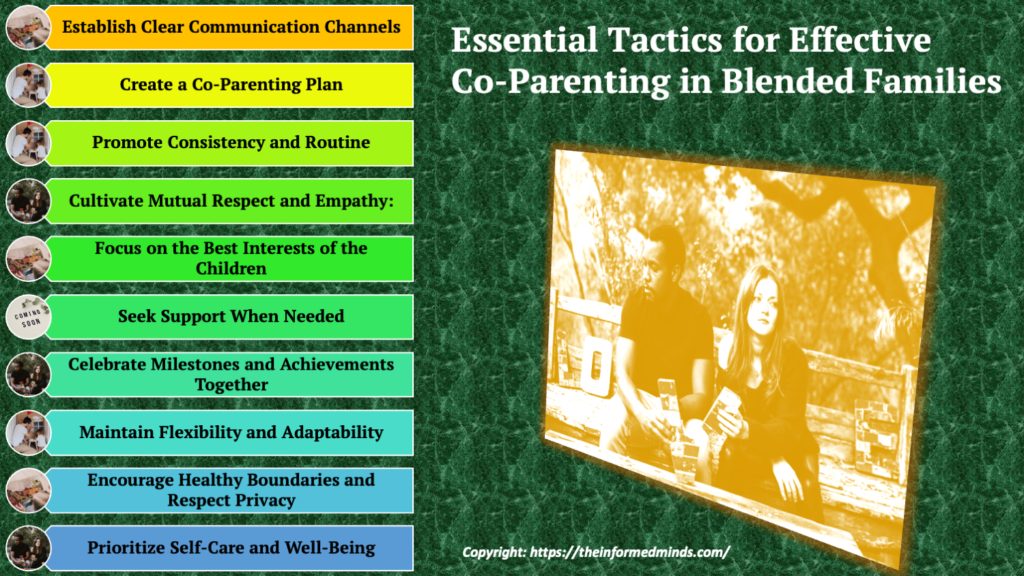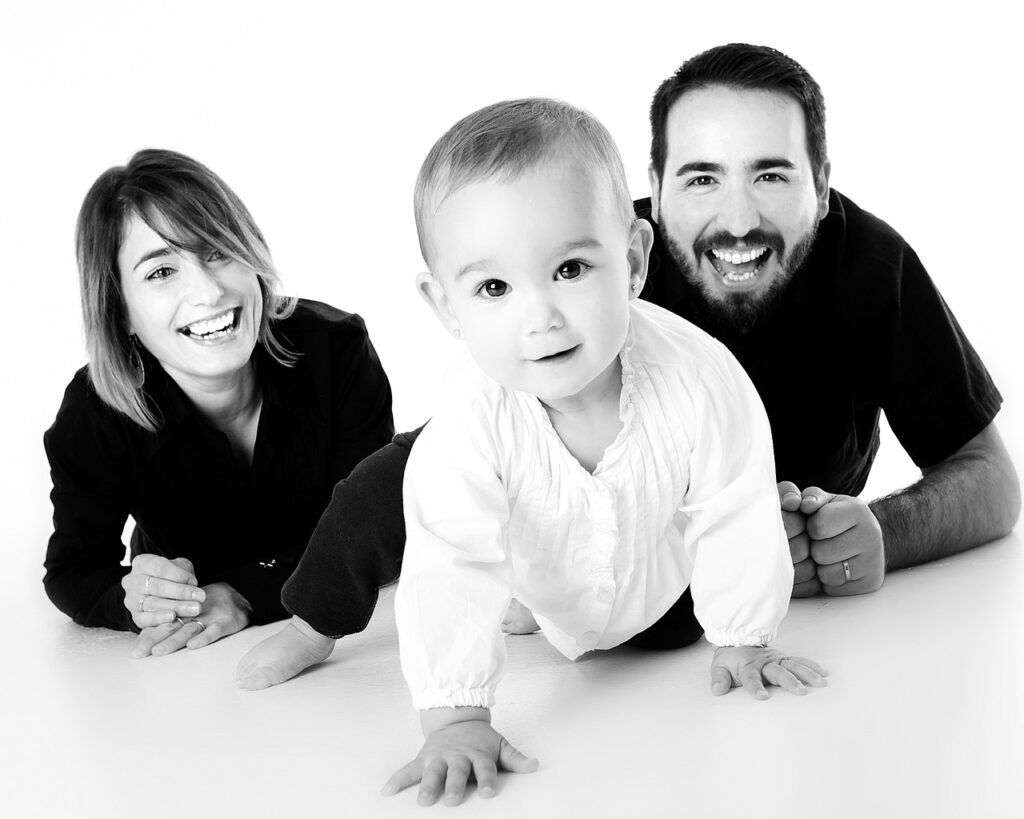To Share is to Show You Care!
In today’s dynamic family structures, blended families have become increasingly common. Navigating co-parenting within these arrangements presents unique challenges, but with patience, communication, and empathy, successful co-parenting is achievable. In this guide, we explore effective strategies and solutions for harmonious co-parenting in blended families.
1. Understanding Co-Parenting in Blended Families
Co-parenting in blended families involves coordinating parenting responsibilities between biological parents, step-parents, and sometimes even multiple households. It requires flexibility, understanding, and a commitment to prioritize the well-being of the children involved.

2. Key Strategies for Successful Co-Parenting in Blended Families

2.1 Establish Clear Communication Channels
- Open, honest communication is the cornerstone of effective co-parenting. Ensure that all parties involved are kept informed about important matters concerning the children.
- Utilize various communication tools such as phone calls, emails, text messages, and co-parenting apps to stay connected and organized.
2.2 Create a Co-Parenting Plan
- Develop a detailed co-parenting plan outlining visitation schedule, holiday arrangements, and decision-making processes regarding education, health, and extracurricular activities.
- Be willing to revisit and adjust the plan as the needs of the children and the family evolve.
2.3 Promote Consistency and Routine
- Consistency is key to providing stability for children in blended families. Strive to maintain consistent rules, routines, and disciplinary measures across households whenever possible.
- Ensure that children feel equally valued and respected in both households to foster a sense of belonging and security.
2.4 Cultivate Mutual Respect and Empathy
- Foster a culture of mutual respect and empathy among all family members, regardless of their role within the blended family structure.
- Encourage children to express their feelings and concerns openly, and validate their emotions without judgment.
2.5 Focus on the Best Interests of the Children
- Keep the best interests of the children at the forefront of all co-parenting decisions and interactions.
- Set aside personal differences and prioritize cooperation and collaboration to ensure the well-being and happiness of the children.
2.6 Seek Support When Needed
- Recognize that co-parenting in blended families can be challenging at times, and it’s okay to seek support from family therapists, support groups, or trusted friends and family members.
- Be proactive in addressing conflicts and seeking constructive solutions to resolve disagreements amicably.
2.7 Celebrate Milestones and Achievements Together
- Embrace opportunities to celebrate important milestones and achievements in the lives of the children together as a blended family.
- Whether it’s birthdays, graduations, or special achievements, demonstrate unity and support by attending events and acknowledging each child’s accomplishments as a collective family unit.
2.8 Maintain Flexibility and Adaptability
- Recognize that flexibility and adaptability are essential components of successful co-parenting in blended families.
- Be prepared to accommodate unexpected changes in schedules, routines, and parenting arrangements with understanding and cooperation.
2.9 Encourage Healthy Boundaries and Respect Privacy
- Respect the privacy and personal space of each family member, including children, step-parents, and biological parents.
- Encourage healthy boundaries within the family dynamic, and foster an environment where everyone feels valued, respected, and understood.
2.10 Prioritize Self-Care and Well-Being
- Remember to prioritize self-care and well-being for yourself and your co-parenting partners.
- Take time to recharge and rejuvenate, both individually and as a family, to prevent burnout and maintain emotional resilience amidst the demands of co-parenting in a blended family.
Conclusion
Co-parenting in blended families requires dedication, patience, and a willingness to prioritize the needs of the children above all else. By fostering open communication, mutual respect, and a shared commitment to the well-being of the children, blended families can navigate the complexities of co-parenting successfully. Remember, every family is unique, and finding what works best for your family may require time and effort, but the rewards of a harmonious co-parenting relationship are immeasurable.
Embrace the journey of co-parenting in your blended family, and remember that with understanding and compassion, you can overcome any challenges that arise along the way. Together, you can create a loving and supportive environment where children can thrive and flourish.
Frequently Asked Questions
Q1: What is the failure rate of blended families?
A: The failure rate of blended families, unfortunately, is relatively high, with statistics suggesting that around 60-70% of blended families end up in divorce or separation.
Q2: Who should come first in a blended family?
A: In a blended family, the well-being and needs of the children should ideally come first. However, achieving a balance between the needs of children and the dynamics of the adult relationship is crucial for fostering harmony within the family unit.
Q3: When should you walk away from a blended family?
A: Knowing when to walk away from a blended family is a deeply personal decision and depends on various factors such as the level of conflict, emotional well-being of family members, and the ability to resolve differences through communication and counseling. It’s essential to prioritize the safety and happiness of all family members when considering such a decision.
Q4: How long should you wait to move in together with a blended family?
A: There is no one-size-fits-all answer to this question, as the timing of moving in together with a blended family depends on individual circumstances and the readiness of all family members to embrace the change. It’s advisable to take sufficient time to build strong relationships, establish trust, and address any potential concerns before making such a significant transition.
Q5: What factor most greatly contributes to divorce in blended families?
A: One of the primary factors contributing to divorce in blended families is the complexity of managing multiple relationships and navigating the unique challenges that arise from blending different family dynamics, parenting styles, and expectations.
Q6: Which age of children has the most trouble adjusting to a blended family?
A: Adolescents and teenagers often face significant challenges when adjusting to a blended family due to their increased independence, identity formation, and potential resistance to authority figures outside of their biological parents.
Q7: What is the most common type of blended family?
A: The most common type of blended family typically involves a biological parent from one previous relationship and a step-parent entering the family dynamic through marriage or cohabitation, along with their respective children from previous relationships.
Q8: Do kids or spouse come first?
A: Balancing the needs of children and the spouse is essential in a blended family. While children’s well-being is paramount, nurturing the marital relationship and fostering unity between spouses also contributes to the overall health and stability of the family unit.
Q9: What is the mini husband syndrome?
A: The “mini husband” syndrome refers to a situation where a child in a blended family assumes a role of authority or tries to fill the void left by an absent or non-participatory biological father, often resulting in strained family dynamics and potential conflicts.
Q10: What are red flags in a blended family?
A: Red flags in a blended family may include unresolved conflicts between family members, lack of communication, unequal treatment of children, resistance to change, and significant differences in parenting styles or values.
Q11: What if I don’t like my partner’s kids?
A: It’s essential to acknowledge and address any feelings of dislike or discomfort towards your partner’s children openly and constructively. Building positive relationships takes time, patience, and effort. Seeking support from a family therapist or counselor can also be beneficial in navigating these challenges.
Q12: What percentage of blended families end in divorce?
A: Studies suggest that approximately 60-70% of blended families end in divorce or separation, highlighting the unique challenges and complexities associated with blending different family dynamics and relationships.
Q13: What age is hardest for kids to move?
A: Children of all ages may find moving challenging, but transitions during adolescence, typically between the ages of 12 to 16, can be particularly difficult due to the upheaval it brings to their social lives, schooling, and identity development.
Q14: What are the stages of blended families?
A: Blended families typically progress through stages that include the initial formation of the family unit, adjustment and integration of family members, establishment of new family roles and boundaries, and ongoing growth and development as a cohesive family unit.
Q15: How do I move in with step kids?
A: Moving in with step kids requires open communication, patience, and a gradual approach to integration. It’s essential to respect each child’s feelings and autonomy while fostering a sense of belonging and inclusion within the family. Building trust, establishing clear boundaries, and creating shared family rituals can help facilitate a smooth transition for everyone involved.
The Informed Minds
I'm Vijay Kumar, a consultant with 20+ years of experience specializing in Home, Lifestyle, and Technology. From DIY and Home Improvement to Interior Design and Personal Finance, I've worked with diverse clients, offering tailored solutions to their needs. Through this blog, I share my expertise, providing valuable insights and practical advice for free. Together, let's make our homes better and embrace the latest in lifestyle and technology for a brighter future.

